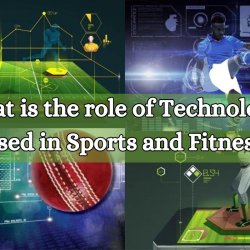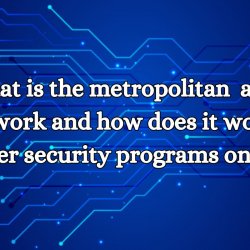Top 10 difference between technology and software

 Introduction
Introduction
Welcome to the world of technology and software! In today’s digital age, these two terms are often used interchangeably, but they have distinct differences. In this blog section, we will dive deeper into the top 10 differences between technology and software.
Firstly, let’s define these two terms. Technology refers to any tools, machines or devices that are created by humans to make their lives easier. It includes physical objects such as smartphones, laptops, and even household appliances like refrigerators and washing machines. On the other hand, software is a set of instructions or programs that control how technology functions. It consists of code written by developers to perform specific tasks on electronic devices.
Now that we have a better understanding of what technology and software are, let us explore how they play a crucial role in our daily lives. Technology has become an integral part of our lives, from the moment we wake up in the morning until we go to bed at night. We use various technologies like alarm clocks in our everyday routine without even realizing it. Similarly, software also plays a significant role as it allows us to communicate with others through social media apps or stay organized with productivity tools.
One of the key differences between technology and software is that while technological advancements refer to the development of new devices or gadgets, software updates refer to improving existing programs or applications. Technological advancements happen when new ideas are brought to life through research and development. For example, the invention of smartphones was a significant technological advancement that changed the way we communicate and access information.
Definition of Technology and Software
- Technology:
Technology refers to the application of scientific knowledge for practical purposes. It encompasses a wide range of tools, techniques, systems, and methods used to solve problems or achieve specific objectives. Technology can be both tangible, such as machinery and equipment, and intangible, such as software and processes. It plays a crucial role in driving innovation, improving efficiency, and enhancing human life across various fields, including communication, transportation, healthcare, manufacturing, and entertainment.
- Software:
Software refers to a set of instructions and data that enable a computer or other digital device to perform specific tasks or functions. It includes programs, applications, and operating systems that govern the operation of hardware and enable users to perform various activities, such as word processing, data analysis, communication, and entertainment. Software can be categorized into system software, which manages and controls the basic operations of a computer, and application software, which performs specific tasks for the user. It is a fundamental component of modern technology, enabling the development and operation of a wide range of digital devices and systems.
Purpose of Technology vs. Software
- Purpose of Technology:
- Innovation and Advancement: Technology drives innovation and technological advancement across different sectors, fostering the development of new products, processes, and systems that improve efficiency, enhance productivity, and enable progress in various fields.
- Problem Solving: Technology serves the purpose of solving complex problems and addressing practical challenges by providing effective solutions and tools that streamline operations, optimize workflows, and facilitate decision-making processes.
- Improving Quality of Life: Technology contributes to enhancing the quality of life by introducing advancements in healthcare, communication, transportation, and other critical areas, thereby enabling individuals and communities to lead more comfortable, convenient, and productive lives.
- Economic Growth: Technology plays a significant role in driving economic growth by fostering innovation, creating new job opportunities, and stimulating the development of new industries, thereby contributing to the overall growth and prosperity of economies worldwide.
- Purpose of Software:
- Task Automation: Software enables the automation of various tasks and processes, reducing manual effort and streamlining operations, thereby enhancing efficiency, accuracy, and productivity in diverse domains such as business, manufacturing, and data analysis.
- Information Management: Software facilitates the management and organization of vast amounts of data and information, enabling users to store, retrieve, process, and analyze data efficiently, thereby supporting informed decision-making and strategic planning.
- User Engagement and Interaction: Software fosters user engagement and interaction by providing intuitive interfaces, interactive experiences, and user-friendly applications that enable users to access information, communicate, and perform tasks seamlessly and effectively.
- Problem Solving and Optimization: Software serves the purpose of solving specific problems and addressing user needs by providing tailored solutions, applications, and tools that optimize workflows, streamline processes, and improve overall performance and functionality.
Development Process of Technology vs. Software
- Development Process of Technology:
- Research and Conceptualization: The development of technology typically begins with extensive research and conceptualization to identify market needs, assess feasibility, and explore potential solutions.
- Design and Prototyping: After establishing the conceptual framework, engineers and designers create prototypes and models to test the practicality and functionality of the proposed technology. This stage often involves iterative design processes to refine the product’s features and specifications.
- Engineering and Manufacturing: Once the design is finalized, the technology moves into the engineering and manufacturing phase. Engineers and technicians work on refining the product’s components, systems, and structures, while manufacturers produce the physical technology based on the finalized specifications.
- Testing and Quality Assurance: Rigorous testing and quality assurance procedures are employed to ensure that the technology meets industry standards, performs as expected, and complies with safety and regulatory requirements.
- Deployment and Maintenance: After successful testing and quality assurance, the technology is deployed in the market. Continuous maintenance and updates are often required to address issues, enhance performance, and incorporate new features or improvements.
- Development Process of Software:
- Requirement Analysis: Software development begins with a comprehensive analysis of user requirements and project objectives to define the scope, features, and functionalities of the software application.
- Design and Architecture: Based on the requirements, software architects and developers create the system’s design and architecture, outlining the software’s structure, modules, interfaces, and data flow.
- Coding and Implementation: Programmers write the source code according to the design specifications, implementing the required features and functionalities. This stage involves the use of various programming languages and development tools to create the software application.
- Testing and Debugging: Software undergoes rigorous testing and debugging to identify and resolve any issues or bugs that may affect its performance, functionality, or security.
- Deployment and Maintenance: Upon successful testing, the software is deployed for use by the intended users. Ongoing maintenance, updates, and support are crucial to ensure the software’s continued performance, security, and compatibility with evolving technology standards.
Usage in Daily Life – Advantages and Disadvantages
Technology and software have become an integral part of our daily lives, from the moment we wake up to the time we go to bed. In this fast paced world, it is almost impossible to imagine functioning without them. From simple tasks like setting our alarm clocks to complex operations like managing finances and controlling home appliances, technology and software make our lives easier and more convenient. However, with all its advantages, there are also some disadvantages that come with using technology and software in our daily lives.
One of the major advantages of using technology and software is convenience. With just a few clicks or taps, we can accomplish tasks that would have taken us hours or even days in the past. For instance, sending emails, paying bills, ordering groceries or booking tickets can now be done effortlessly from the comfort of our own homes. This has significantly reduced the amount of time and effort required for these activities.
Moreover, access to information and communication has greatly improved with the use of technology. We can now easily connect with people from around the world through various platforms such as social media, video conferencing or messaging apps. This has not only made staying in touch with loved ones easier but also expanded opportunities for business and education on a global scale.
Another advantage of technology is automation which has increased efficiency in many industries. It has streamlined processes by eliminating human errors and reducing manual labor. However, this advancement has also led to job displacement as machines are now able to perform tasks previously done by humans. This creates a challenge for those whose jobs have been replaced by technology.
Differences in Cost and Investment
We will discuss the key differences in cost and investment between technology and software, as well as important considerations for making informed decisions.
- Cost Comparison Between Technology and Software:
One of the main differences between technology and software is their respective costs. Technology refers to hardware components such as computers, servers, and networking equipment, while software refers to computer programs and applications. Generally, technology tends to have a higher upfront cost compared to software. This is due to the tangible nature of hardware components which require physical manufacturing and production processes.
- Types of Investments for Different Technologies and Software:
Another factor that sets technology apart from software is the type of investment required. While technology typically involves a one time cost for purchasing the necessary equipment, software investments may involve ongoing subscriptions or licensing fees. Additionally, there are different types of investments for different technologies such as cloud computing services or virtual machines.
- Differences in Maintenance Costs for Technology and Software:
In terms of maintenance costs, there are again notable differences between technology and software investments. Technology may require occasional repairs or upgrades which can add to its overall maintenance expenses. On the other hand, software usually requires regular updates or patches for security purposes which can be managed through subscriptions or licenses.
- LongTerm Cost Outlook for Technology vs Software:
When considering long term costs, both technology and software investments have their own unique factors to consider. With technology, you may need to budget for potential hardware replacements or upgrades over time whereas with software, keeping up with constant updates can drive up long term costs.
You can also read:






Ingen kommentarer endnu